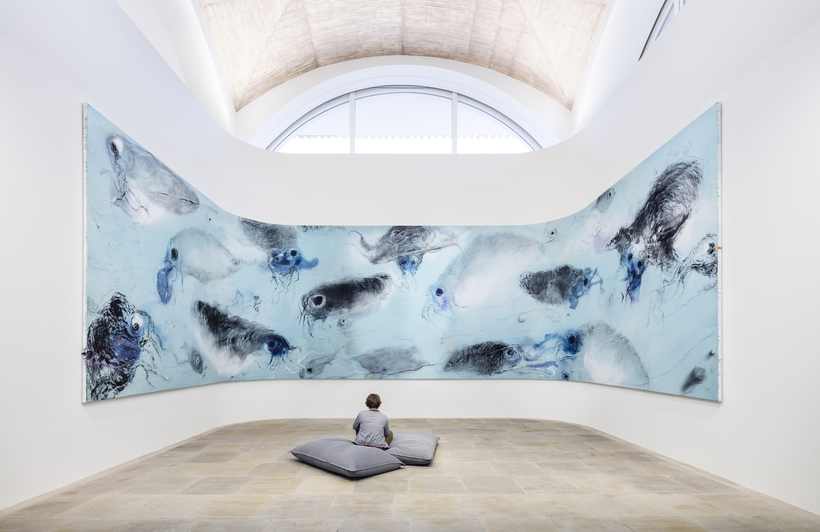“I hate museums,” the French entrepreneur Édouard Carmignac said in 2018. “I want a living foundation.” Back in the 1980s, when Carmignac was invited to a wedding on the Île de Porquerolles, he found just the sort of spot that could be home to the modern art he was starting to collect. It was a place away from the world, located in the South of France, 15 minutes by boat from Hyères—a small commune an hour west of trendier Saint-Tropez. The remoteness was part of its allure, as was its openness to the elements and the seasons. The estate was owned by the architect Henri Vidal, who had created a villa where a farmhouse once stood.
When Vidal died in 2011, his daughters sold the estate to the Fondation Carmignac. Atalier Barani was hired to enlarge the structure underground, bringing modern inflections—glass ceilings, long light-filled halls— to the Provençal villa.
The Villa Carmignac and its surrounding sculpture park, designed by Louis Benech, opened to the public in 2018. Since its opening, the Fondation has held annual exhibitions in the summer, the first two drawn from its permanent collection. Last summer saw an exhibition for the 10th anniversary of the Fondation’s Prix de Photojournalism. Now, for its fourth season, the American curator Chris Sharp has been invited to collaborate with the Port-Cros National Park on the exhibition “The Imaginary Sea,” running through mid-October.

The theme couldn’t be more appropriate: the ocean feels like a natural extension of the villa, whose open spaces are occupied by low pools, many of which serve as shimmering ceilings for the 20,000-square-foot, below-ground galleries. “It already looks partially submerged underwater,” Sharp says. In one room, a permanent installation by Miquel Barceló travels across three walls, sea creatures afloat against a piercing blue backdrop. In another, more ominously, Bruce Nauman has suspended bronze fish above a dark ocean floor.
Because the villa is located on an island, Sharp says, the idea to turn it into an underwater natural history museum was intuitive. It also strikes a powerful chord. The ocean, its size and depth, is a mystery of lyricism and drama, yet its preservation demands concrete action. “The impetus,” explains Sharp, “is to project a hypothetical future in which many of these animals might no longer exist. What is presented here are fanciful approximations.”

As per museum policy, it’s shoes-off to enter the villa: visitors go barefoot on cool floors. Sharp urges viewers to be on the lookout for works by Yuji Agematsu, Allison Katz, Alex Olson, Gabriel Orozco, and Lin May Saeed. Meanwhile, there’s a Jeff Koons blow-up lobster in aluminum balanced between a bin and a chair, while Cosima von Bonin’s huge stuffed-animal killer whale is seated dutifully at a school desk. A painting by the late Gilles Aillaud sees fish staring morosely from a half empty aquarium, and a black-and-white photograph by Jochen Lempert depicts a father and child gazing, rapt, at a school of passing fish.

The mystical environments—some surrealist, some pop, others abstract—suggest different oceanic ecosystems. This was intentional. Sharp meant to mimic the feeling of an aquarium. But he also wants the calm, magical quality of the water to leave visitors with a sense of solastalgia—the helplessness and distress caused by the inexorable loss of nature. “I have wanted to make a show like this for years,” Sharp says. “One that addresses the West’s evolving relationship with the so-called animal kingdom and by extension, the environment.” He pauses. “This is one of the most urgent and political topics of our time.”
Elena Clavarino is an Associate Editor for Air Mail

